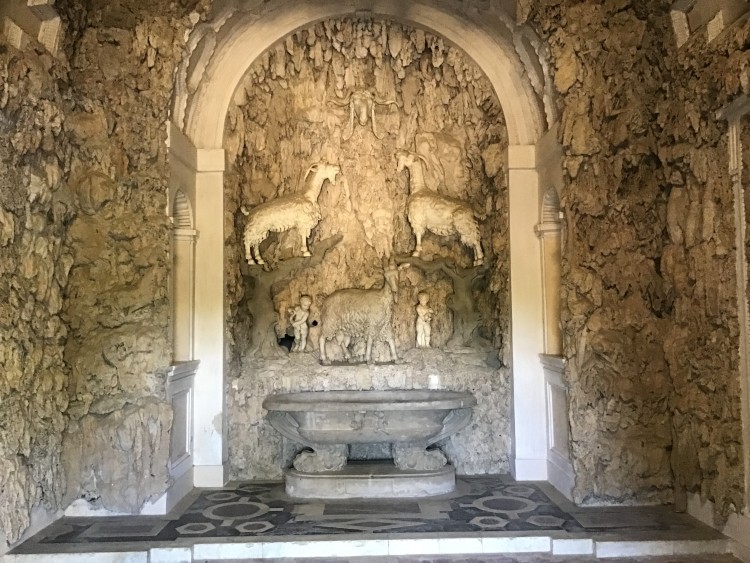 DIDA
Browse
How it works
Insert your collection
News
Contacts us
DIDA
Browse
How it works
Insert your collection
News
Contacts us
Author: Davide Fortini
Type: Grotta
Room: Grotta di Madama

Description
In a secluded corner of the Boboli Gardens, between 1553 and 1555, Eleonora di Toledo, wife of Grand Duke Cosimo I de' Medici, had a small grotto built, "a place of choice for the duchess and her consort to shelter from the cares of public life." The work was directed by engineer Davide Fortini, Tribolo's son-in-law, whom the Medici had commissioned to design the entire Boboli Gardens. The Grotto was designed to simulate an underground environment, but in reality it is a building placed above ground and totally constructed. The facade has a faux-rock wall, in the center of which is a small doorway with white marble jambs and upper cornice, which contrasts strongly with the wall itself. The interior space consists of a small room: the barrel vault has a coffered ceiling with white stucco frames surrounded by limestone concretions, which create a bizarre play of contrasts between different materials. The walls are covered in spongy rock with architectural elements, such as panels and niches. Decoration with faux sponges and stalactites frames an oval marble basin, adorned with putti playing with capricorns. The Capricorn was chosen by the Grand Duke as his emblem, as a symbol of those who like to reach with slowness and stubbornness ("festina lente") the most coveted peaks. The basin is surmounted by three statues of goats, of which the central one with swollen udders is the work of Baccio Bandinelli, and a large ram's head, which once threw water. In 1696 the basin was replaced by a copy, and the original now stands under the last window of the facade of the Pitti Palace on the left side. The Grotto later was enclosed by a wooden door with the coat of arms of the house of Austria, referable to Maria Magdalena of Austria, wife of Cosimo II, to whom the name "di Madama" is presumably due.
Photo Credits: - Text Credits: www.facebook.com
More artworks in Grotta di Madama
If you are not at the museum click on the link below and you can test our guide by framing some works directly on the DEMO page.

If you are near the museum you can reach it and by framing with your mobile you can discover the audio guide.
